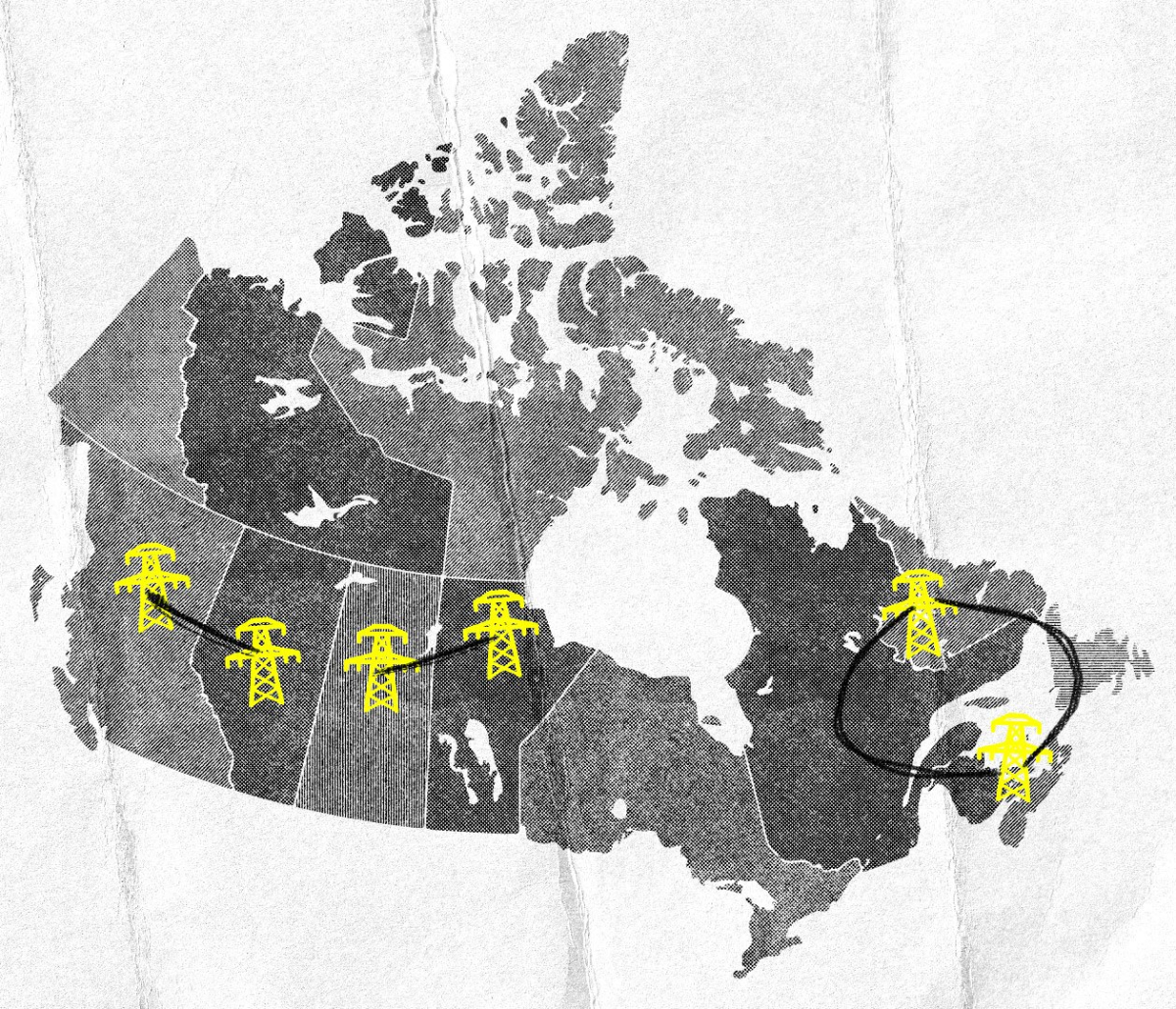Support strong Canadian climate journalism for 2025
Canada’s transition off fossil fuels to a sustainable future by mid-century will hinge on scaling up huge amounts of clean electricity, a federal government study published Monday found. But plenty stands in the way of meeting that goal.
A report from Canada’s Electricity Advisory Council, composed of 19 representatives from utility companies, civil society organizations and regulators across the country, said the challenge facing Canada is two-fold. It must decarbonize existing power grids while quickly increasing capacity to meet new demand, as heavy industries pivot to cleaner manufacturing, and electric vehicles and high-efficiency heat pumps become more widespread.
“How we navigate that transition — deliberately or not, thoughtfully or not, collaboratively or not — will determine how we emerge on the other side: as winners or losers in a historic, global shift,” Philippe Dunsky, the council’s chair, wrote in the report.
Dunsky — a prominent electricity consultant — says the report is focused on finding a path to net-zero emissions that is aimed at quickening the pace of the transition and taking into consideration reliability, affordability and Indigenous participation.
The Canada Electricity Advisory Council was launched in May 2023 and tasked with providing recommendations to Energy and Natural Resources Minister Jonathan Wilkinson. The final report contains 28 recommendations, ranging from requiring provinces and territories to create energy roadmaps to guide their transitions, to “streamlining” regulatory processes, to designating an individual or office to serve as an “accountable champion” of clean electricity.
The council emphasizes that it is taking a “pragmatic” approach to the transition because, while on average Canada’s electricity systems are fairly green (with 84 per cent of electricity already coming from non-emitting sources such as hydro dams, nuclear plants and a smaller portion of renewables including wind and solar), there is significant regional variability. Provinces and territories such as Alberta, Saskatchewan and Nunavut are still heavily dependent on fossil fuel-burning power plants and will require flexible strategies to decarbonize their grids, according to the report.
“Our recommendations could be ambitious, but they cannot be simplistic — there are simply no easy answers, silver bullets or one-size-fits-all solutions,” Dunsky wrote. “There is undeniable urgency to act in the face of climate change, but no action will be sustainable if it does not safeguard… affordability and reliability.”
David Suzuki Foundation clean energy manager Stephen Thomas applauded the council’s report for striking the right balance on many of its recommendations, including centering Indigenous rights, upgrading the grid and endorsing collaboration between provinces. But the report also lacks urgency, he said.
“What’s disappointing about this report, is that it doesn’t hold the federal government to account to meet important 2035 targets for cleaning up the grid,” Thomas wrote in a statement. “We must phase out fossil fuel electricity which continues to raise energy bills, drive climate disasters like wildfires, and impact the health of Canadians.
“Our expectations for the upcoming clean electricity regulations are clear: we believe the best path for Canada is one that ensures no new fossil fuel projects are connected to the grid, and where nearly all fossil fuel projects are phased out by 2035,” he added. “We remain concerned that the fossil fuel industry has been successful in their significant lobbying effort to secure loopholes, [like] extensions and exemptions to keep polluting electricity sources on the grid until well into the 2040 decade.”
The council’s report focused significantly on the importance of collaboration between provinces and territories and other levels of government. One recommendation for Ottawa is for Wilkinson to meet with provincial and territorial ministers this year to launch work on an inter-regional power grid infrastructure framework — a tool to help identify cross-border transmission projects.
Collaboration between provinces — as Canada’s National Observer has previously dubbed the ‘Buddy System’ — remains one of the most promising ways to decarbonize power grids. Rather than building a literal coast to coast to coast transmission network, regional grids could pair provinces with huge hydro reserves and fossil-fuelled provinces that have wind and solar potential to rapidly slash emissions while building more reliable and affordable power grids.

That strategy is possible mostly thanks to geographic luck. Each province that still depends on burning coal, oil or gas to generate electricity has a neighbour next door with hydropower that can lend a hand. By linking British Columbia with Alberta, Manitoba with Saskatchewan, and Quebec and Newfoundland and Labrador to Nova Scotia and New Brunswick, power grids can be rapidly decarbonized while meeting growing demand.
Jason Dion, a senior research director with the Canadian Climate Institute and member of Canada’s Electricity Advisory Council, previously told Canada’s National Observer there is “great complementarity” between regions of the country, but collaboration isn’t guaranteed.
The advisory council’s report notes that, given the regional diversity and polarized politics of the country, it cannot be expected for all governments to share the same position on electricity development. But nonetheless, policy “stability and predictability will be essential,” — for two main reasons. One is that trading electricity between provinces is one way to take advantage of cheap wind and solar in one region, while using reliable hydro power and nuclear in another to help meet demand. But “an overly politicized environment” could put large, cross-jurisdictional projects “at serious risk,” according to the report.
The second reason is investor confidence. “Policy swings create uncertainty,” and as a result, the “investment capital that is so vital for a successful transition is at risk of flowing elsewhere.”
Though the report doesn’t single Alberta out, Premier Danielle Smith’s decision to put a moratorium on renewable energy development last year is the country’s clearest example of policy shifts driving investment away, with the Pembina Institute estimating that move stalled $33 billion worth of investments.
In February, Smith lifted the moratorium on renewables development, but imposed a series of rules that restrict the sector even further, experts said.






Comments
Considering the fact that both major political parties in Canada are extremely pro industry it’s a very good bet that regardless as to who forms government in 2025, Canada will blow right past any and all environmental promises and become one of the worlds biggest outliers on stopping climate change. Neither seem all that interested in saving the planet and far too many of supporters on both sides agree that something needs to be done, but if it means they have to change even an iota from their usual life style, they will not support anything the government suggests!
Heaven forbid that we might have to make any changes to anything!
I know right? My hope of a habitable future is fading fast.